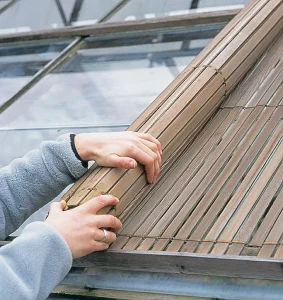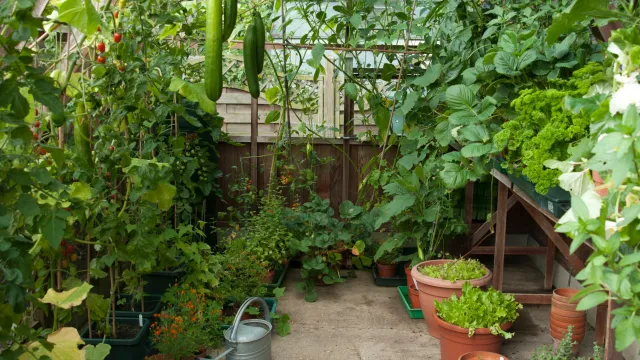As summer brings abundant light, managing heat becomes a critical challenge for greenhouse operations. Guy Barter, an expert in horticulture, provides key strategies to ensure greenhouses remain productive and sustainable during the hottest months.
In summer, the primary concern for greenhouses and conservatories is heat, unlike other seasons where light limitation is more problematic. Effective ventilation is essential to allow excessively hot, dry air to exit and cooler, moister air to enter.
Commercial greenhouses typically feature roof vents covering at least 20% of the floor area, with side vents being less effective. Unfortunately, home greenhouses often have less ventilation, necessitating the use of shading to control temperatures. Ideal conditions maintain a maximum temperature of 25°C, as temperatures above 30°C can suppress plant growth and promote red spider mites and powdery mildew.
Shading Techniques and Their Implications
Shading is a double-edged sword: while it reduces temperature, it also decreases light, which is vital for plant growth. Therefore, shading must be carefully balanced to limit heat on bright, hot days while allowing sufficient light for plant growth. Removing some glass panes from the greenhouse sides or gable can be an effective way to improve ventilation without excessive shading.
Shade paint is a cost-effective method of heat control, typically applied lightly in spring and more thickly by mid-summer. Exterior blinds are ideal as they provide shade without allowing heat into the greenhouse, though they are more expensive. Interior screens are less costly but allow more heat inside.
Shade-avoiding plants like tomatoes thrive with maximum light exposure, while plants like cucumbers, which can be scorched by strong sun, require up to 50% shading. Shade-tolerant plants, such as begonias and coleus, typically need more than 50% shade to avoid stress.
Managing Humidity and Watering Practices
Humidity management is crucial in summer to prevent plant stress and diseases. Hot air can hold more water vapor than cold air, so insufficient humidity can reduce photosynthesis and encourage pests like red spider mites. Effective ventilation allows moister external air to enter, mitigating dryness. Additionally, keeping greenhouses filled with well-watered, leafy plants helps maintain adequate humidity levels.
Watering practices must ensure that roots remain constantly moist during summer. Unlike winter, roots should not dry out between waterings. The usual indicator of dryness is a change in surface color, but peat-free potting compost may dry on the surface while remaining wet at the root zone. Lifting pots to assess weight or squeezing the growing media to check moisture levels are practical methods to monitor water content.
Evening watering minimizes evaporation losses, but in overcast weather, morning watering reduces disease risks by keeping plants dry overnight. A “little and often” approach to watering is ideal, though even diligent waterers may occasionally have plants dry out. Deeper but less frequent watering, ensuring water runs out of the pot, is easier to manage and suits large, thirsty plants that resist occasional saturation.
Practical Solutions for Dry Pots
If pots do dry out, smaller ones can be stood in a bucket of water for an hour. For larger pots, adding a wetting agent to the water can speed up rehydration. This practical approach helps maintain optimal moisture levels, ensuring plants remain healthy and productive throughout the summer.
Conclusion
Effectively managing heat, ventilation, and watering in greenhouses during summer is crucial for maintaining plant health and productivity. Implementing these expert strategies can help greenhouse operators optimize their operations, ensuring sustainable and efficient production even in the hottest months.










